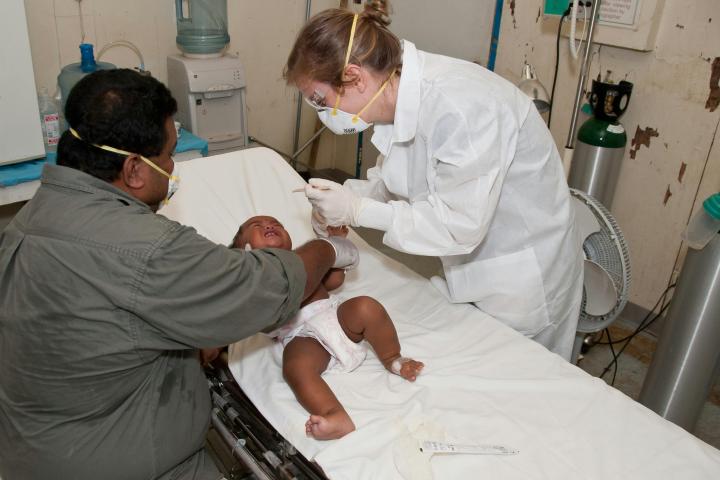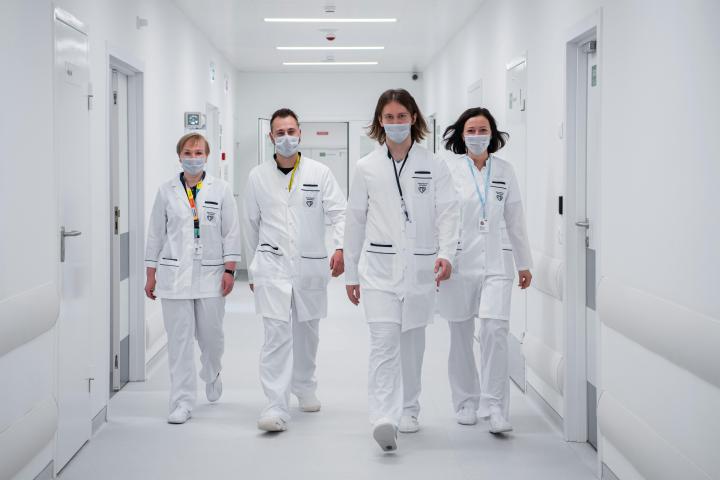
Healthcare Insights: Will Doctors Organize
John August
Last week, the New York Times carried a rather amazing article written by a doctor.
A highlight from the article, quoted here is part of the inspiration for this month’s Healthcare Insights: Will Doctors Organize?
“If we can build an organizing network through doctors’ unions, then proposals to demand universal healthcare through use of collective civil disobedience via physicians’ control over health care documentation and billing, for example, could move from visions to genuinely actionable plans.
Regardless of whether we act through unions or other means, the fact remains that until doctors join together to call for a fundamental reorganization of our medical system, our work won’t do what we were promised it would do, nor will it prioritize the people we claim to prioritize. To be able to build the systems we need, we must face an unpleasant truth: Our health care institutions as they exist today are part of the problem rather than the solution.”
Dr. Eric Reinhart, the author of this article, makes it clear that burnout and general unhappiness among doctors is related to a dysfunctional non-system of healthcare. In so doing, he is framing the organization of doctors as part of a broader social movement, one that brings together patients, communities, doctors, and broad engagement across peoples and institutions with mutual interest in transforming our health care.
Another very significant article written before the pandemic spoke to the need of doctors to organize. This is a great article written by Dr. Eric Topol, a very well-known cardiologist and frequent contributor to major publications inside and outside the medical world.
His call for organization of doctors is rooted in patients’ needs and how the market-driven non-system of care fails them and the doctors who provide care. Dr. Topol raises the all-important issue of technology and the new era we are in, including artificial intelligence that will dominate medicine more and more.
Dr. Topol embraces these advances and at the same time warns: “Already, the emergence of machine learning has led some observers to proclaim that, in the future, hospitals will be able to do without radiologists, pathologists, and other medical specialists. That isn’t true—deep-learning algorithms have, at best, narrow capabilities—and yet it seems inevitable that managers will ignore medical realities in favor of the bottom line, that unless doctors can control their patient interactions, technology will be less effective.”
And an often-referenced article from the Journal of the American Medical Association outlines conditions and dynamics in physician practice which suggest that the possibility of unionization or other forms of doctor organization is nearly inevitable.
Today, thousands of doctors belong to traditional national unions including the Doctors Council, United Physicians and Dentists, Committee of Interns and Residents (CIR) , as well as local unions in mainly public sector settings around the country. These organizations have done pathfinding work for many decades, establishing rights, voice, and protection for their members.
The CIR especially has had substantial growth in the past few years. We have reported on that success in previous issues of Healthcare Insights.
However, among the over one million practicing doctors in the nation, a tiny percentage are organized. In the past, doctors have been prevented from organizing based on their role as an independent practitioner whose employment standing is at odds with anti-trust provisions in federal laws, which disallow collective action among independent practitioners to advance their economic interests.
The American Medical Association (AMA) was once the established voice for doctors in the nation. In the early 1950’s, 75% of doctors were members. Today, the AMA’s own documentation indicates that less than 25% of doctors practicing in the U.S. are AMA members.
Perhaps much more significant is that today, 74% of doctors are employed either by hospitals or health systems. In 2012, just over ten years ago, only 5.6% were employed! This shift in employment status of doctors may be a critical factor in doctors organizing for collective action!
We have a confluence of events and issues that are rather unprecedented among our nation’s doctors:
- As cited in Dr. Reinhart’s article, burnout is a deeply troubling trend for the individuals who suffer it, and for the vacancies it produces.
- According to the Education Data Initiative, young doctors are saddled with enormous debt from the cost of their medical education. As a result, they are too often forced to seek the higher paying specialties in medicine as opposed to seeking practice among the underserved, rural areas, and in primary care where our people and communities need medical care the most, where salaries are much lower.
- As reflected in the articles cited in this article along with many conversations I have had with doctors, an overarching theme is that doctors are losing control over the doctor-patient relationship itself. Between the numbers of patients, they are required to see in the course of the day, to navigating permissions from insurance to use their judgment in treatments and healing, to spending endless amounts of time tied to a computer forcing less interaction with patients, to having little to no voice in the implementation of electronic medical records or the rapid advance of new technologies, the examples of loss of patient-doctor interaction rise each day.
- Dissatisfaction and demoralization of the nation’s doctors is not new, not a function of the pandemic alone.
- The 2012 Physician Foundation survey found that nearly 8 in 10 doctors were somewhat pessimistic or very pessimistic about the future of the medical profession.
- Mayo Clinic physicians Liselotte N. Dyrbye and Tait D. Shanafelt wrote in a commentary in the Journal of the American Medical Association that 30-40% of physicians in the U.S. were experiencing burnout.” (The Doctors Crisis, Jack Cochran, MD and Charles Kenney, 2014, The Kaiser Permanente Foundation, p. xvi).
Will Doctors Organize?
It would appear that the answer lies in how doctors respond to what is an original moment in history: the conditions that doctors face each day have reached the depths of demoralization and at the same time the overwhelming majority of doctors have seen their employment status shift from independent practitioner to employee.
Additionally, as the interest among doctors grows to band together, these activities and considerations among doctors is occurring in the same moment of heightened attention to workers in the U.S. organizing their workplaces.
On the one hand, there is a great deal of activity in organizing, workplace activism, and strikes. Last year, more than 270,000 workers won the right to have a union through various means, including union elections. (Bureau of Labor Statistics, January 19, 2023).
We saw work stoppages in many health care settings, and new organizing and activism among young doctors at prestigious medical institutions like Stanford, UCLA, UCSF, among others. There have been high profile organizing campaigns at brand-name corporations like Amazon, Starbucks, Chipotle, Apple, Trader Joe’s and many more. The nation nearly experienced a national railroad strike harkening to earlier periods in American history that used to see the threat of or actual work stoppages across the nation in basic industry.
On the other hand, we have seen recent reports that despite this increased union organizing activity, the percentage of Americans who belong to unions actually shrank in 2022. “The 2022 unionization rate (10.1 percent) is the lowest on record.
In 1983, the first year where comparable union data are available, the union membership rate was 20.1 percent and there were 17.7 million union workers.” (Bureau of Labor Statistics, January 19, 2023)
The percentage of Americans who belong to unions today is about the same as 100 years ago, before the passage of the National Labor Relations Act.
While workers voices are being heard today, a major question remains: what will a large and sustained upsurge in worker voice and power look like?
One large success story stands out: The Fight for $15/hour has produced raises for 26 million low wage workers. These raises, often doubling or tripling wage levels have not occurred through traditional collective bargaining.
The success has been achieved through direct action and community organizing in a large and sustained fashion. Wage increases have come from state and local legislation and referenda. And in September of 2022, Governor Newsom of California signed a law establishing a Fast Food Council covering some 550,000 workers.
That Council will regulate wages and working conditions in a sectoral setting, not by individual employer…a huge breakthrough in new forms of collective power for workers.
While it is accurate to say that the Fight for $15 has NOT produced new union members, it is also accurate to say that the activism of low wage workers and their supporters in communities across the nation has produced direct success and improvement in the lives of millions.
There are more than a million doctors in the United States. Very few belong to unions, and most of those who are unionized work in the public sector. The private sector, overwhelmingly dominates healthcare delivery where most doctors work, whether in group practices or in varying types of facilities, be they hospitals, clinics, or increasingly in large group practices.
What a moment in American history to contemplate: while tens of millions low-wage workers have successfully seen their wages grow through new forms of organizing and activism, we see some of the nation’s highest paid professionals calling for fundamental change in health care for all of our people. Doctors are writing publicly and holding discussions among themselves.
The organization’s leaders include Dr. Eric Topol, whose article sited earlier here calls for doctors to organize and take control of their profession on behalf of patients.
It seems fair to expect that doctors will band together and act based on their growing sense of commitment to lead change in American healthcare. Some will organize in the traditional manner that others have organized. Some will seek new forms of organization.
What does seem clear is that the ideas and sentiments as expressed by Dr. Reinhart’s article are a call to action:
“Regardless of whether we act through unions or other means, the fact remains that until doctors join together to call for a fundamental reorganization of our medical system, our work won’t do what we were promised it would do, nor will it prioritize the people we claim to prioritize. To be able to build the systems we need, we must face an unpleasant truth: Our health care institutions as they exist today are part of the problem rather than the solution.”
We will pay close attention to the rising voices of doctors. Will they be able to find the form of organization that will succeed? What will be the definition of success? What will be the definition of union growth?
Can we as observers and participants in these questions transform our way of thinking and evaluating success?
From movements to raise wages for poor workers to doctors challenging the foundations of how healthcare is experienced by our people, it is critical that we observe and analyze these movements for social change with new eyes, too.
John August is the Scheinman Institute’s Director of Healthcare and Partner Programs. His expertise in healthcare and labor relations spans 40 years. John previously served as the Executive Director of the Coalition of Kaiser Permanente Unions from April 2006 until July 2013. With revenues of 88 billion dollars and over 300,000 employees, Kaiser is one of the largest healthcare plans in the US. While serving as Executive Director of the Coalition, John was the co-chair of the Labor-Management Partnership at Kaiser Permanente, the largest, most complex, and most successful labor-management partnership in U.S. history. He also led the Coalition as chief negotiator in three successful rounds of National Bargaining in 2008, 2010, and 2012 on behalf of 100,000 members of the Coalition.



